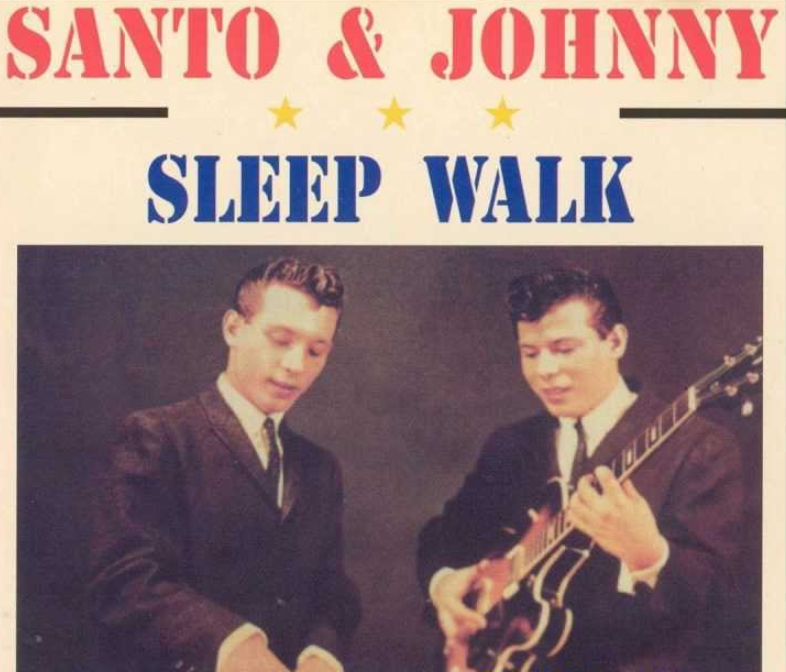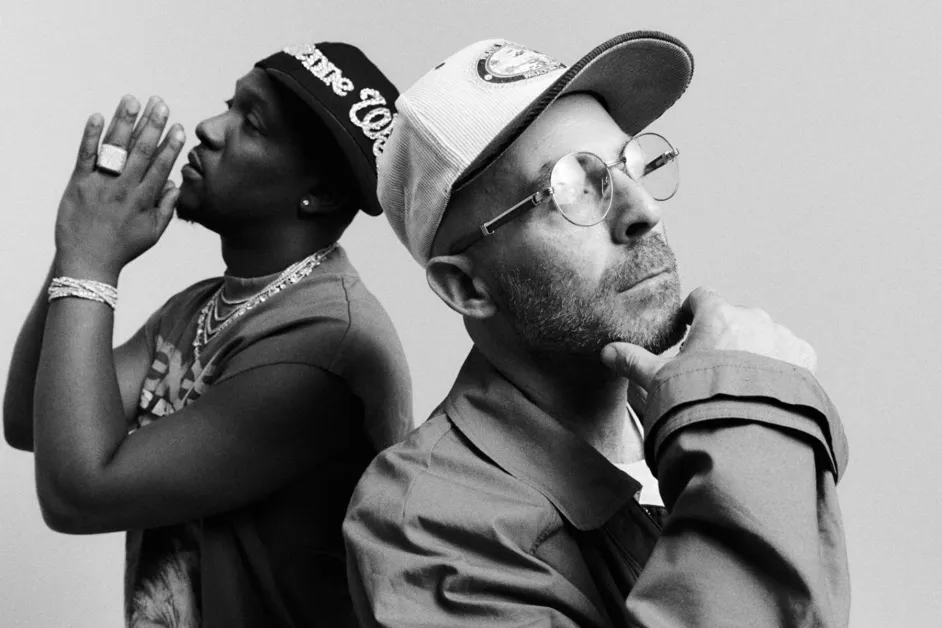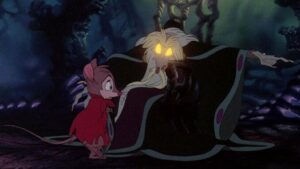Some songs have a unique ability to transcend generations, evoking nostalgia and emotion without a single word. One such masterpiece is Sleep Walk, the hauntingly beautiful instrumental track by Santo & Johnny. Released in 1959, this song remains an enduring classic, known for its dreamy steel guitar melody and evocative atmosphere. Whether heard in films, television shows, or late-night radio broadcasts, Sleep Walk carries a timeless quality that continues to captivate listeners.
But how did this song come to be? What inspired Santo & Johnny to create such a mesmerizing tune? In this article, we’ll explore the origins of Sleep Walk, its creation, rise to fame, and the lasting impression it has had on music and popular culture.
Who Were Santo & Johnny?
Santo & Johnny were an American instrumental rock duo consisting of brothers Santo and Johnny Farina. Born and raised in Brooklyn, New York, the brothers were introduced to music at a young age, largely due to their father’s encouragement. Their father, who served in the U.S. military and spent time stationed in Oklahoma, was fascinated by the steel guitar—an instrument that was deeply rooted in country and Hawaiian music. Recognizing its unique and expressive sound, he encouraged his eldest son, Santo, to learn to play it.
Santo quickly became proficient, developing a distinctive slide guitar technique that would later define the duo’s signature sound. Johnny, the younger brother, complemented Santo’s steel guitar playing with rhythm guitar and songwriting skills. The two brothers formed a musical partnership, blending various influences, including jazz, blues, rock & roll, and the atmospheric qualities of Hawaiian and country music.
Early Musical Career
Before Sleep Walk became their breakout hit, Santo & Johnny spent their teenage years performing at local venues and honing their craft. They drew inspiration from artists like Les Paul, Chet Atkins, and steel guitar legends such as Jerry Byrd. Their goal was to create music that was both technically impressive and emotionally resonant.
By the late 1950s, they began recording demos, seeking opportunities to showcase their instrumental talents. It wasn’t long before their unique sound caught the attention of a small New York label, Trinity Records.
The Creation of Sleep Walk
A Song Born from Late-Night Inspiration
The story of Sleep Walk’s creation is as dreamy and spontaneous as the song itself. One evening in 1959, the Farina brothers found themselves working late into the night, experimenting with different melodies on Santo’s steel guitar. They were captivated by the idea of a song that felt like a nocturnal dream, something that evoked the feeling of wandering through a quiet cityscape in the middle of the night.
According to Johnny Farina, the song’s melody came to them almost instinctively. As they played around with different chord progressions and slide guitar techniques, the hypnotic and melancholic tune of Sleep Walk began to take shape. They continued refining it over the next few nights, adding a slow, rolling rhythm that gave the song its signature dreamy quality.
The Recording Process
Once they had finalized the composition, the brothers took the song to the studio. Backed by a simple yet effective rhythm section—including drums and a subtle bassline—they recorded Sleep Walk as an instrumental piece, letting Santo’s steel guitar take center stage.
The resulting track was both simple and profoundly moving. Its slow, swaying tempo and atmospheric steel guitar melody created an ethereal, almost hypnotic effect. The song’s title, Sleep Walk, perfectly captured its mood—a sonic representation of drifting through a half-conscious, dreamlike state.
Breaking into the Charts
After releasing Sleep Walk as a single in 1959, the song quickly gained traction. Its emotional pull and distinctive melody resonated with audiences, and within a few months, it soared to the top of the Billboard Hot 100 chart, reaching No. 1 on August 22, 1959. It remained there for two weeks and spent a total of 20 weeks on the charts.
This success was remarkable for an instrumental track, as most of the popular songs of the time featured vocal performances. However, Sleep Walk stood out precisely because of its wordless expressiveness—it conveyed emotion purely through melody and instrumentation.
A Defining Sound of the Late 1950s
The late 1950s was a transformative period in popular music, as rock & roll continued to evolve and instrumental songs gained popularity. Alongside Sleep Walk, other instrumental hits of the era included songs by artists like The Ventures, Duane Eddy, and Link Wray.
But Sleep Walk had a unique emotional depth that set it apart. While many instrumental rock songs of the time emphasized energy and excitement, Sleep Walk took a more introspective approach, making it perfect for slow dances, romantic moments, and late-night radio playlists.
Legacy and Culture Impression
Influence on Music and Future Artists
The haunting steel guitar melody of Sleep Walk became an inspiration for countless musicians across different genres. Many guitarists have cited it as an influence, particularly in surf rock, blues, and even modern ambient music. The song’s signature slide guitar sound has been emulated by artists such as:
•George Harrison (The Beatles): Known for incorporating slide guitar into his solo work, Harrison was heavily influenced by the dreamy steel guitar tones of songs like Sleep Walk.
•Brian Setzer (Stray Cats): A rockabilly musician who recorded a popular cover of Sleep Walk, keeping its vintage charm alive.
•Joe Satriani: A legendary instrumental guitarist who has performed Sleep Walk live, paying tribute to its melodic brilliance.
Movie and Television Appearances
Sleep Walk has been featured in numerous films and television shows, further cementing its status as a timeless classic. Some notable appearances include:
•“La Bamba” (1987): The biographical film about Ritchie Valens uses Sleep Walk during its emotional closing scene, making it one of the most memorable cinematic uses of the song.
•“Casino” (1995): Martin Scorsese included the track in his iconic film, adding to the movie’s dreamy and nostalgic tone.
•Various TV Shows:Sleep Walk has appeared in episodes of The Sopranos, Mad Men, and Stranger Things, proving its ability to evoke nostalgia and melancholy across different generations.
Cover Versions and Tributes
Over the decades, Sleep Walk has been covered by numerous artists, each bringing their own interpretation to the classic melody. Some notable versions include:
•The Shadows (1961): A British instrumental band known for their surf rock sound recorded a memorable rendition.
•Larry Carlton (1981): A jazz guitarist who added a smooth, sophisticated feel to the song.
•Brian Setzer Orchestra (1998): Setzer’s cover retained the vintage charm while incorporating a modern rockabilly twist.
Despite these adaptations, the original Santo & Johnny recording remains the definitive version—a timeless piece of music history.
More than six decades after its release, Sleep Walk continues to captivate listeners with its haunting beauty. Its ethereal melody and evocative atmosphere make it a song that transcends time, evoking emotion in every new generation that hears it.
For Santo & Johnny, Sleep Walk was more than just a hit song—it was a defining achievement that secured their place in musical history. Though they recorded many other songs, none quite captured the magic and universal appeal of this instrumental classic.
Whether playing softly in the background of a romantic evening, accompanying a nostalgic film scene, or inspiring a new generation of guitarists, Sleep Walk remains a masterpiece of mood and melody. It serves as a reminder that music doesn’t need lyrics to tell a story—it just needs the right sound to touch the soul.
No comments yet.








